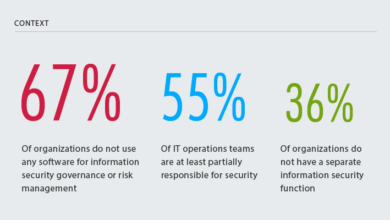
Finance on the Front Line A New Perspective
Finance on the front line isn’t just about spreadsheets and reports; it’s about understanding the heartbeat of a business. This approach puts finance in the thick of daily operations, influencing everything from product pricing to inventory management. It’s about connecting financial strategies with real-world actions, from the retail floor to the tech lab.
This deep dive explores the nuances of this evolving financial model. We’ll examine the crucial skills, tools, and challenges faced by finance professionals who are integral to the day-to-day operations of their companies. We’ll also look at how finance on the front line impacts decision-making and drives operational efficiency in various industries.
Defining “Finance on the Front Line”

Finance on the front line isn’t just about crunching numbers in a sterile office. It’s about understanding the business needs of a company at the very heart of its operations, providing financial insights and support directly to those making the decisions. This approach goes beyond traditional finance departments, bridging the gap between financial strategy and day-to-day business activities. It’s a proactive, integrated role, focusing on empowering operational teams with the financial intelligence they need to succeed.This proactive, integrated approach distinguishes finance on the front line from traditional finance roles.
Traditional finance often focuses on reporting and analysis, while finance on the front line emphasizes collaboration, communication, and real-time decision support. The goal isn’t just to track costs; it’s to anticipate problems, identify opportunities, and ultimately improve business performance.
Key Characteristics of Finance on the Front Line
Finance on the front line is characterized by its close collaboration with operational teams. It requires a deep understanding of the business processes and challenges faced by those on the ground. This translates into financial acumen coupled with a strong understanding of the company’s specific industry and competitive landscape. Finance professionals in this role must be able to translate complex financial data into actionable insights, making them vital to the decision-making process.
Different Contexts of Application
Finance on the front line can be applied in a multitude of contexts. For example, in a manufacturing company, it might involve working closely with production managers to optimize inventory levels and minimize production costs. In a retail setting, it could mean supporting store managers in pricing strategies and understanding customer demand fluctuations. The key is always to empower those closest to the customer or the product with the financial insights needed to improve their performance.
Industries Where Finance on the Front Line is Crucial
Finance on the front line is critical in many industries. Retail, manufacturing, and hospitality all benefit greatly from this approach. In retail, real-time sales data analysis enables managers to adjust pricing and promotions dynamically. In manufacturing, optimizing inventory and supply chain costs requires continuous collaboration with front-line personnel. In the hospitality sector, accurate forecasting of demand and efficient cost management can boost profitability.
Impact on Decision-Making
Finance on the front line directly impacts decision-making at a granular level. For example, a store manager armed with real-time sales data can decide on a price adjustment for a specific product that is underperforming. Or, a production manager, working closely with a finance professional, can make informed decisions about adjusting production schedules to minimize costs based on projected demand.
This translates into more agile and effective responses to market fluctuations.
Driving Operational Efficiency
By empowering front-line teams with financial insights, finance on the front line drives operational efficiency. This isn’t about simply tracking expenses; it’s about providing the tools and information necessary to optimize processes, minimize waste, and ultimately improve profitability. For instance, by closely collaborating with logistics teams, finance can help identify inefficiencies in the supply chain and suggest improvements, leading to cost savings and faster delivery times.
Challenges and Opportunities
Finance on the front line, encompassing the financial professionals directly interacting with operational teams and customers, is undergoing a period of significant transformation. This evolution presents both significant challenges and lucrative opportunities. Navigating these dynamics requires a proactive approach, understanding the shifting landscape, and adapting to emerging trends.
Major Obstacles Faced by Front-Line Finance Professionals
Front-line finance professionals often grapple with a multitude of obstacles. These range from the complexities of real-time data analysis and interpretation to the pressures of maintaining tight deadlines and ensuring compliance. The sheer volume of information flowing through these teams necessitates the ability to quickly synthesize data and provide actionable insights to operational departments. Moreover, the pressure to constantly improve efficiency and reduce costs adds further complexity to the role.
Opportunities for Front-Line Finance Professionals
The opportunities for front-line finance professionals are substantial and multifaceted. The demand for individuals adept at leveraging technology for data analysis and reporting is rising. Proficiency in tools like advanced analytics and automation empowers them to identify trends, predict outcomes, and ultimately drive better business decisions. Further, a focus on building strong relationships with operational teams fosters a collaborative environment that drives efficiency and innovation.
Emerging Trends Impacting Front-Line Finance
Several emerging trends are reshaping the role of front-line finance. The increasing prevalence of cloud-based solutions is transforming how financial data is stored, accessed, and analyzed. This shift demands adaptability and proficiency in these new technologies. Furthermore, the rise of automation and AI is changing the way tasks are performed, creating opportunities for individuals to focus on higher-level strategic initiatives.
The focus on data-driven decision making necessitates proficiency in data visualization and storytelling to communicate insights effectively.
Challenges and Opportunities Across Different Industries
The specific challenges and opportunities for front-line finance vary across industries. The nature of the business, the operational processes, and the regulatory environment all contribute to unique demands. The following table provides a comparative overview of common obstacles and potential advantages across several key industries.
| Industry | Challenges | Opportunities |
|---|---|---|
| Retail | Managing fluctuating sales patterns, handling a high volume of transactions, ensuring inventory optimization, and adapting to rapidly changing consumer demands. | Leveraging data analytics to predict sales trends, personalize customer experiences, and optimize pricing strategies. Opportunities exist in developing innovative financial models for loyalty programs and subscription services. |
| Healthcare | Navigating complex reimbursement structures, ensuring compliance with strict regulations, managing a diverse range of billing procedures, and dealing with high patient volumes. | Opportunities to use data analytics to improve patient outcomes, optimize resource allocation, and enhance operational efficiency. Financial planning and analysis roles are crucial for managing rising costs and optimizing revenue streams in a rapidly evolving healthcare landscape. |
| Technology | Staying ahead of rapid technological advancements, managing intellectual property valuation, ensuring data security and compliance, and handling complex financial transactions. | Opportunities in leveraging emerging technologies to streamline financial processes, optimize investments, and drive innovation. The demand for data scientists and financial analysts with deep technical expertise is very high. |
Skills and Competencies

Finance on the front line requires a unique blend of technical and soft skills. These professionals are the bridge between financial operations and the rest of the organization. They need to understand both the financial implications of decisions made in other departments and communicate those implications effectively. This necessitates a strong grasp of financial principles, coupled with the ability to translate complex data into actionable insights for non-financial stakeholders.
Essential Skills for Success
Understanding the specific skills required for “finance on the front line” roles is crucial for effective recruitment and development. These professionals must possess a strong foundation in financial analysis, reporting, and forecasting, along with the ability to interpret and communicate complex financial data clearly. The ability to identify trends and patterns in data, and to use this information to support business decisions is essential.
Crucial Competencies
Competencies in finance on the front line extend beyond technical skills. Critical thinking, problem-solving, and communication are paramount. These professionals must be adept at identifying and resolving financial issues in real-time, while maintaining strong relationships with colleagues across various departments. A high level of adaptability is also crucial, as the needs and challenges faced by organizations constantly evolve.
Soft Skills
Soft skills are often overlooked but are vital for success in finance on the front line. These professionals need to be effective communicators, able to translate complex financial information into easily understandable terms for non-financial audiences. Active listening, empathy, and the ability to build strong relationships with stakeholders across the organization are all essential. Collaboration, teamwork, and the ability to work under pressure are crucial for effectively navigating dynamic business environments.
Examples include presenting financial reports to senior management, explaining complex financial concepts to non-financial colleagues, or working collaboratively with sales and marketing teams.
Hard Skills
The following table Artikels the essential hard skills required for success in “finance on the front line” roles. These skills are the foundation for effectively supporting and advising various departments within the organization.
| Skill Category | Specific Skill | Importance |
|---|---|---|
| Data Analysis | Using statistical software (e.g., Excel, SQL, Tableau) to analyze financial data; Identifying trends and patterns in data; Developing financial models; Creating insightful visualizations of data. | Essential for extracting meaningful insights from data, informing strategic decisions, and supporting accurate forecasting. |
| Communication | Clearly and concisely conveying complex financial information to diverse audiences; Active listening to understand stakeholder needs; Presenting financial data in a compelling and understandable manner. | Enables effective collaboration, ensures buy-in from stakeholders, and fosters transparency throughout the organization. |
| Problem Solving | Identifying and analyzing financial issues; Developing creative and effective solutions; Implementing solutions and monitoring their impact; Proactively anticipating potential problems and mitigating risks. | Fundamental for navigating complex situations, improving operational efficiency, and driving value for the organization. |
| Financial Accounting | Preparing financial statements (income statements, balance sheets, cash flow statements); Maintaining accurate financial records; Understanding Generally Accepted Accounting Principles (GAAP). | Ensures financial data accuracy, provides a comprehensive overview of financial performance, and supports compliance. |
| Financial Modeling | Creating financial models to project future performance; Analyzing different scenarios and their impact; Using models to support decision-making processes. | Crucial for evaluating investment opportunities, assessing risks, and forecasting future financial performance. |
| Forecasting | Developing accurate financial forecasts; Considering various economic factors and market trends; Adapting forecasts based on changing circumstances. | Essential for planning, budgeting, and ensuring financial stability in dynamic environments. |
Continuous Learning, Finance on the front line
Continuous learning is paramount for professionals in finance on the front line. The financial landscape is constantly evolving, with new technologies, regulations, and market trends emerging regularly. Staying abreast of these changes is vital for maintaining expertise and providing relevant support to the organization. Professionals in this field must be committed to ongoing professional development through workshops, certifications, and self-study to enhance their skills and stay current with best practices.
Tools and Technologies: Finance On The Front Line
Finance on the front line is increasingly reliant on technology to streamline processes, enhance data analysis, and support faster decision-making. From basic accounting software to sophisticated analytical platforms, the right tools empower frontline finance professionals to effectively manage financial operations and contribute to overall business success. This section delves into the specific software and technologies utilized in various industries, highlighting their impact and illustrating how they facilitate data-driven decision-making.
Software and Tools Used by Frontline Finance Professionals
Frontline finance professionals utilize a wide range of software and tools tailored to their specific industry needs. These tools range from basic accounting software to advanced data analytics platforms, all contributing to improved efficiency and accuracy in financial tasks.
Tools in Different Industries
Different industries have varying technological needs, but several tools are commonly used across sectors. The choice of tools depends on the scale of operations, the nature of the transactions, and the specific requirements of the business.
Retail
Retail finance professionals rely heavily on Point of Sale (POS) systems and inventory management software to track sales, manage inventory levels, and analyze sales trends. These systems provide real-time data on sales performance, allowing for quick adjustments to pricing strategies and inventory replenishment. For example, a retail store using a POS system can immediately see sales figures for different product categories, enabling targeted promotions and inventory management.
Further, inventory management software helps predict demand and minimize overstocking or stockouts, ultimately optimizing inventory levels and reducing costs.
Healthcare
Healthcare finance professionals utilize Electronic Health Records (EHR) systems and billing software to manage patient data, track payments, and ensure accurate billing. EHR systems integrate patient information, diagnoses, treatments, and charges, allowing for comprehensive financial reporting. Billing software automates the billing process, ensuring timely and accurate claims processing. For example, an EHR system in a hospital can generate reports on the financial impact of various treatments or procedures, enabling informed decision-making.
Technology
Technology companies utilize project management software and financial forecasting tools to track project costs, manage budgets, and predict future financial performance. Project management software enables teams to track project timelines, monitor expenses, and ensure projects stay within budget. Financial forecasting tools project future revenue, expenses, and profitability, allowing for proactive financial planning. For example, a tech company might use project management software to monitor the cost of developing a new software feature, ensuring that the project stays within the allocated budget.
How Technology Streamlines Processes
Technology streamlines processes in finance on the front line by automating repetitive tasks, providing real-time data, and enhancing data analysis capabilities. Automation reduces errors, freeing up time for more strategic tasks. Real-time data allows for quicker decision-making, while advanced analytics tools provide insights into trends and patterns, leading to better financial outcomes.
Examples of Emerging Technologies
Emerging technologies like Artificial Intelligence (AI) and Machine Learning (ML) are transforming finance on the front line. AI-powered tools can analyze large datasets to identify patterns and anomalies, enabling early detection of fraud and improving risk management. ML algorithms can predict future financial performance, leading to more accurate forecasts and better resource allocation. For example, AI can identify fraudulent transactions in real-time, minimizing financial losses.
Essential Tools in Various Industries
| Industry | Essential Tools |
|---|---|
| Retail | Point of Sale (POS) systems, Inventory management software, CRM systems |
| Healthcare | Electronic Health Records (EHR) systems, Billing software, Claims processing systems |
| Technology | Project management software, Financial forecasting tools, Budgeting and cost management software |
Data-Driven Decision Making
Finance on the front line uses these tools to gather, analyze, and interpret data to make informed decisions. By leveraging data insights, professionals can optimize resource allocation, identify cost-saving opportunities, and enhance overall financial performance. For instance, by analyzing sales data from a POS system, a retail store can adjust its pricing strategy to maximize revenue.
Case Studies and Examples
Finance on the front line isn’t just a theoretical concept; it’s a practical approach that’s transforming how companies operate. This section explores real-world examples of how empowering frontline employees with financial literacy and decision-making power can lead to significant improvements in efficiency, profitability, and customer satisfaction. We’ll examine how different companies are implementing this strategy and the tangible results they’ve achieved.The core principle of finance on the front line is about bringing financial awareness and decision-making closer to the point of contact with customers and operations.
This decentralization of financial control enables quicker responses to market fluctuations, more efficient resource allocation, and better understanding of customer needs.
Retail Company Case Study
A large retail chain, let’s call it “RetailCo,” implemented a program where store managers had greater autonomy in managing their budgets and inventory. Instead of relying on centralized approval for every small purchase, store managers were empowered to make decisions within a defined spending limit. This shift allowed for quicker responses to changing customer demand, enabling them to adjust inventory levels and promotional strategies in real time.
As a result, RetailCo saw a significant reduction in stockouts and a noticeable improvement in sales conversion rates. The empowered store managers were better positioned to understand and meet the specific needs of their local customer base, leading to increased customer satisfaction and loyalty.
Manufacturing Company Example
A manufacturing company, “MfgCorp,” used finance on the front line to streamline their supply chain. Production line supervisors were trained to analyze real-time data on material usage and production efficiency. This enabled them to identify potential bottlenecks and inefficiencies immediately, leading to cost savings and improved production output. The improved visibility into operational costs empowered them to make proactive adjustments, minimizing disruptions and maximizing output.
Financial Decisions by Frontline Employees
Frontline employees often make critical financial decisions without realizing it. A sales representative, for example, might negotiate a favorable payment term with a customer. A field service technician might decide to prioritize repairs based on their impact on customer satisfaction and revenue generation. These seemingly small decisions have a cumulative impact on the company’s overall financial health. Training and tools to aid these decisions will lead to further improvements.
Table: Company Approaches and Outcomes
| Company | Approach | Outcome |
|---|---|---|
| RetailCo | Empowered store managers with budget autonomy, allowing for quicker adjustments to inventory and promotions. | Reduced stockouts, improved sales conversion rates, and increased customer satisfaction. |
| MfgCorp | Trained production supervisors to analyze real-time data on material usage and production efficiency, leading to proactive adjustments. | Cost savings, improved production output, and minimized disruptions. |
| TechSolutions | Implemented a mobile expense reporting system for field technicians, enabling immediate approvals and improved tracking. | Reduced processing time for expenses, minimized paperwork, and improved transparency in spending. |
Impact Across Industries
The impact of finance on the front line is not confined to a single industry. The principles are applicable to a wide range of sectors, including healthcare, hospitality, and even technology. In healthcare, empowering nurses to make informed decisions about patient care resources can optimize resource allocation. In hospitality, front desk staff empowered to manage bookings and customer requests efficiently can enhance guest experience and revenue generation.
The core concept of enabling frontline employees to make informed financial decisions translates into improved efficiency and profitability across diverse industries.
Wrap-Up
Finance on the front line is no longer a niche concept; it’s a vital component of modern business success. By understanding the challenges and harnessing the opportunities, companies can unlock a powerful engine for growth and efficiency. This approach bridges the gap between theoretical finance and practical application, empowering organizations to thrive in a dynamic market.
Question Bank
What are some common misconceptions about finance on the front line?
Some people think finance on the front line is simply about crunching numbers quickly. In reality, it’s about understanding the business context, anticipating needs, and building strong relationships across departments. It requires a blend of technical skills and interpersonal abilities.
How does finance on the front line differ from traditional finance roles?
Traditional finance often focuses on reporting and analysis after the fact. Finance on the front line is proactive, working with teams in real-time to improve processes and drive better financial outcomes. It’s about influencing decisions rather than just recording them.
What are the key metrics used to measure the success of finance on the front line?
Key metrics might include improved cash flow, reduced operational costs, increased efficiency in specific processes, and improved customer satisfaction. The exact metrics will vary depending on the specific industry and company goals.
What are some examples of soft skills crucial for success in finance on the front line?
Strong communication, active listening, and negotiation skills are essential. The ability to collaborate with various teams and stakeholders and explain complex financial concepts to non-finance professionals is crucial. Problem-solving skills and adaptability are also key.





